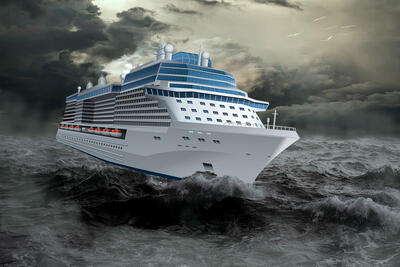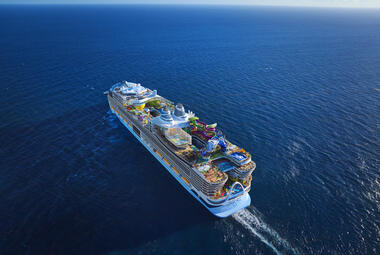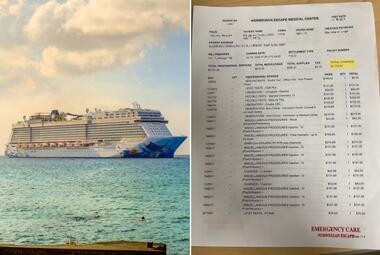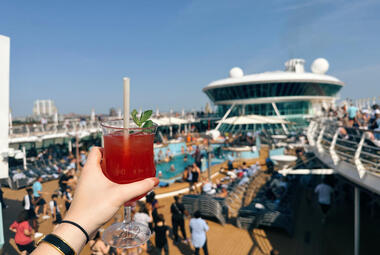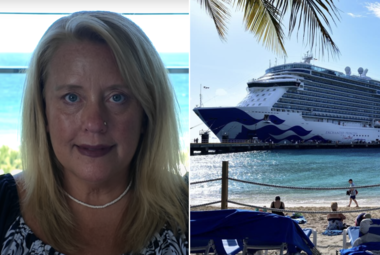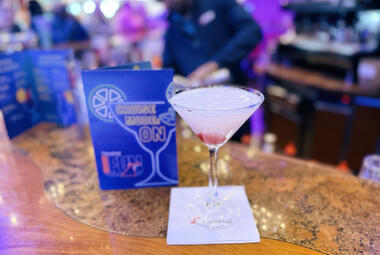If you have seen today's mega cruise ships, you might have wondered why don't cruise ships fall over? How are the mega ships (think Symphony of the Seas, Carnival's Mardi Gras, and the much anticipated Icon of the Seas) able to accommodate the weight of 5,200, 6,680, and 7,600 guests?
With all that height above the water and not much below the water line, what's keeping the ships upright?
Today's modern cruise ships are amazing pieces of technology, maritime tradition, and innovation. That being said, a combination of design and physics is how they stay afloat.
When a cruise ship is designed, the assigned engineers are careful to keep the average density of the ship less than the average density of air. The reason ships float is because they weigh less than the weight of the water that they displace.
Looking at a cruise ship, there is a large amount of the ship above the water, and a small amount below the water. You'll rarely see that portion, though; It's most common to see during dry docks when the ships are completely removed from the water for maintenance.
So what forces are actually acting on the ship to keep it afloat?
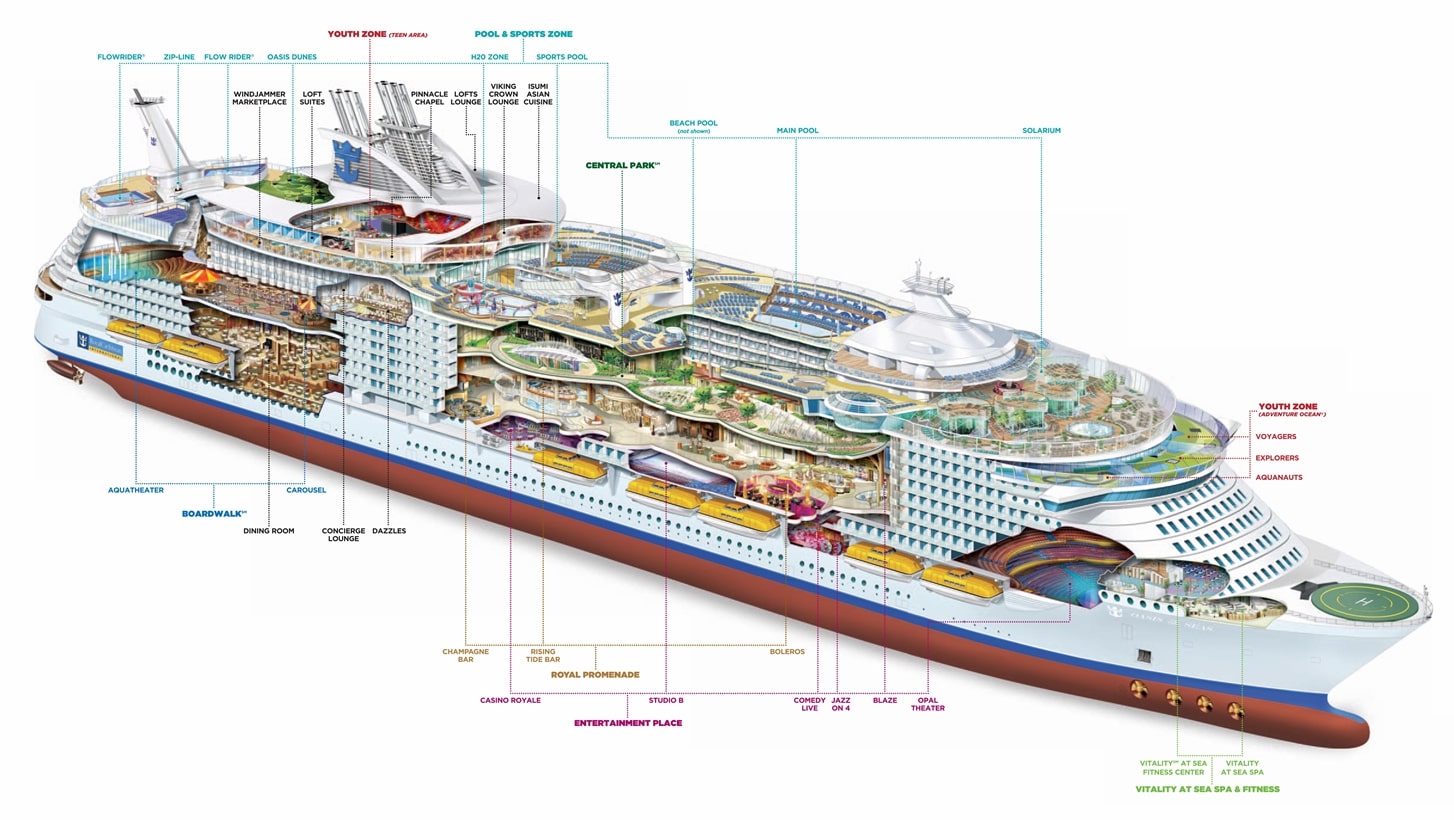
The weight of the ship is pulling it down in the water. The weight is balanced by the buoyancy, which is pushing it up. And if the buoyancy is greater than the weight, the ship would continue to move upwards.
But to work out why the ship doesn't tip over, we need to think about where exactly these forces are acting. Those points are the center of gravity for the weight, and the center of buoyancy for the buoyancy of the ship.

Point 1: Center of Gravity
If everything in the ship weighed exactly the same, the center of gravity would be right in the middle.
But the engines, machinery, fuel stores, and those sort of things weigh an awful lot more than the cabins and passenger spaces -- think of venues like theaters and dining rooms, which are mainly just air and negative space.
This has the effect of dragging the center of gravity downwards. So, we know the center of gravity will be towards the bottom, lower half of the ship.
Point 2: Center of buoyancy
Cruise ships displace water equivalent to its own mass. The pressure of the sea pushes up against the ship's hull in order to counter the downward force of its mass. Since water cannot be compressed, the combined forces create buoyancy.
For the center of buoyancy, we are interested in the stuff under the water, and to find the center of buoyancy, all we need is the center of the water plane area, which is just the middle of the part of the ship that's under the water.
The buoyancy of an object on the water depends on its density. If the object is denser than water, then it will sink. If, however, it is less dense then water, it will float.
What keeps a cruise ship from sinking is an opposing upward force, or pressure, from the water. This upward force weighs the same as the water that was displaced, keeping it from sinking completely.

How the ships stay upright
Since we can calculate the center of gravity compared to the center of buoyancy, it comes down to a matter of managing weights.
But what happens when an external force, such as wind, comes along? Since the wind will likely push the ship on one side, why doesn't it topple over?
Essentially, a cruise ship stays upright because they keep all of the heaviest equipment -- like the engines and whatnot -- below deck. This has the effect of keeping a low center of gravity and keeping the ship upright during unfavorable weather conditions.
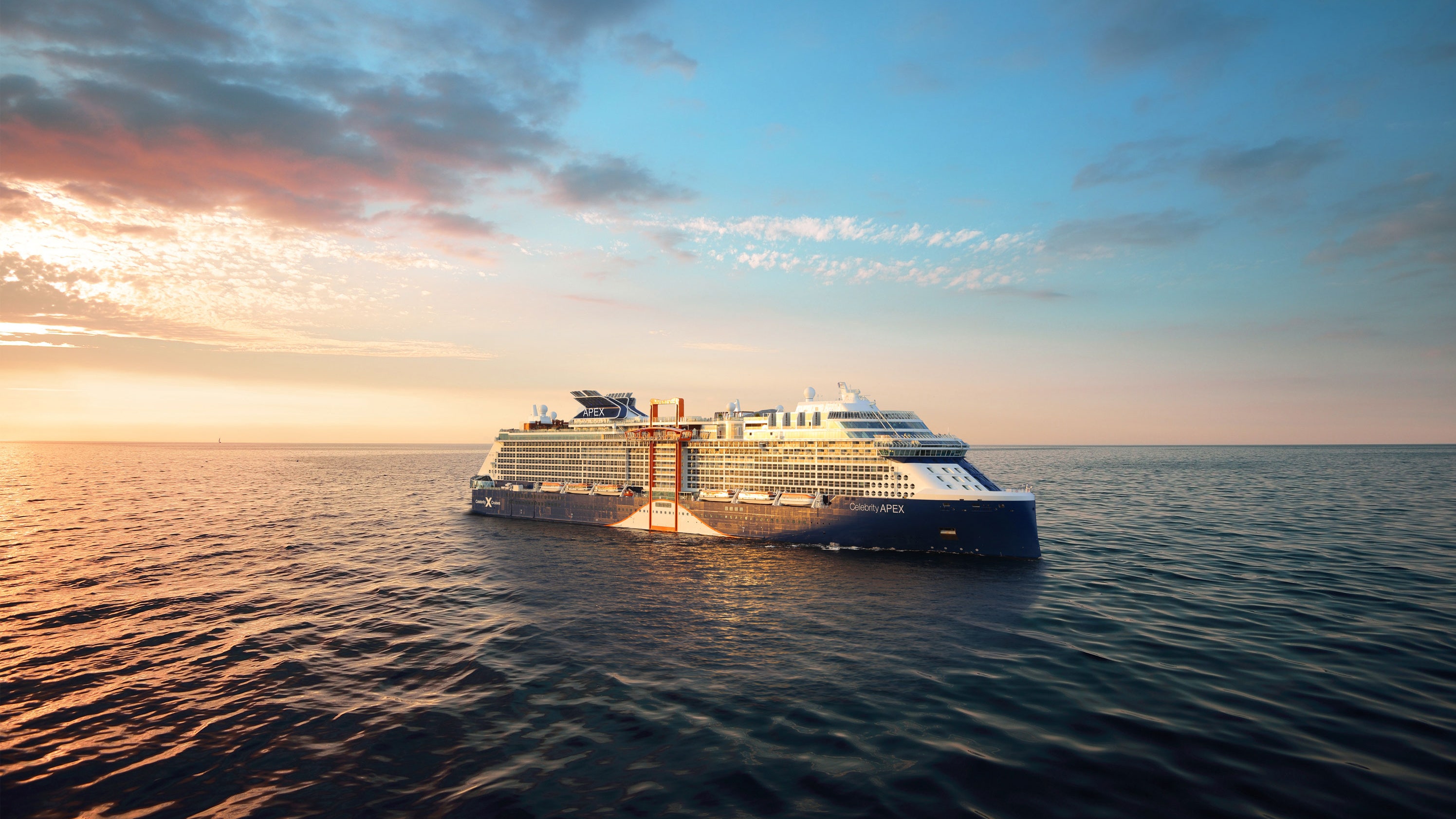
In addition, the shape of a cruise ship's round-bottom hull is wide, which helps it move through the ocean smoothly and with minimal drag. This is much more stable than a v-shaped boat hull.
Round edges also increase the ship stability, preventing the vessel from swaying and rocking and passengers- from feeling seasick.
However, the resulting stability means that cruise ships often move slower than boats with v-shaped hulls.
In addition, ships have something crucial for the ship’s balance, ballast tanks. They contain water that can be pumped from one side of the ship or the other. In case of an emergency or rough seas, it helps to keep the ship balanced, counter the waves and reduce rocking. A large cruise ship usually has several ballast tanks.
So the combined effect of a ship's buoyancy, low center of gravity, and ballast keep the ship from tipping over.


